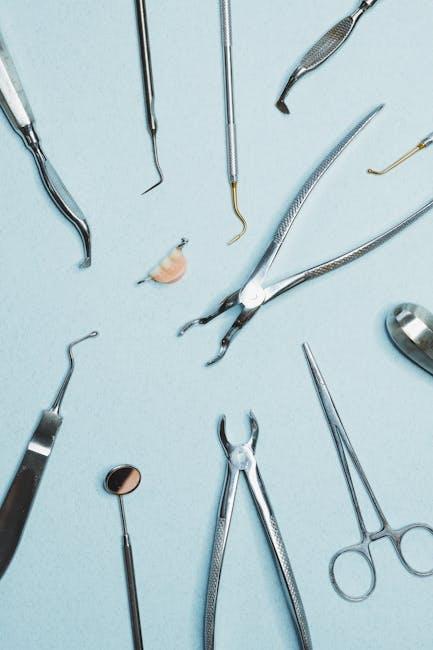
From Scaler to Spatula: Why Dental Hygienists Aren’t Quitting the Profession—but the Workplace
Dental hygienists play an essential role in oral healthcare, acting as the frontline defenders against dental disease with expertise and compassion. Despite the profession’s growing recognition and rewarding career prospects, an unsettling trend has emerged: many dental hygienists aren’t leaving their field—they are leaving their workplaces. Understanding this nuance is key to addressing retention, fostering job satisfaction, and nurturing the future of the oral healthcare industry. In this article, we’ll explore the reasons behind this phenomenon, the challenges hygienists face, benefits they cherish, and practical tips for improving the workplace environment.
The Changing Landscape of Dental Hygiene: More Than Just a Scaler
The phrase “from scaler to spatula” symbolizes the evolving role of dental hygienists. Traditionally, hygienists were primarily recognized for scaling and cleaning teeth. Today, their responsibilities have expanded to include patient education, nutritional counseling, application of preventive materials, and even participation in community health initiatives.
This broader scope enhances the career’s appeal, but it also underscores why professionals remain passionate about their fields even if workplace dissatisfaction pushes them toward considering changes.
Key Expanded Roles of Dental Hygienists:
- Preventive Care Deliverers: Applying sealants, fluoride treatments, and educating patients on oral hygiene.
- Behavioral Coaches: Guiding patients to healthier lifestyle choices impacting oral and systemic health.
- Diagnostic Assistants: Early detection of oral diseases and collaboration with dentists for treatment planning.
- Community Advocates: Participating in public health programs and school outreach for awareness.
Why Dental Hygienists Aren’t Quitting the Profession
While there’s chatter in the industry about shortages and turnover, dental hygienists overwhelmingly express love and pride in their profession. The intrinsic rewards and career benefits keep them grounded.
Top Reasons Hygienists Stay in the Profession:
- Meaningful Patient Impact: Building relationships and seeing positive health outcomes.
- Professional Autonomy: Many enjoy flexible scheduling options, especially in private practice.
- Competitive Compensation: Income potential keeps pace with investment in education.
- Job Stability and Growth: Demand continues to rise due to increased awareness of oral health.
- Opportunities for Specialization: Hygiene offers pathways into education, research, or management.
Why the Workplace Drives Hygienists Away
Despite their passion, many dental hygienists face workplace stressors that make continued employment challenging.
Common Workplace Challenges for Dental Hygienists
| Challenge | Description | Impact |
|---|---|---|
| High Patient Load | Having to see numerous patients in limited time | Increased stress, decreased care quality, burnout |
| Limited Autonomy | Restrictions on treatment decisions imposed by dentists or management | Frustration, reduced job satisfaction |
| Workplace Culture | Lack of teamwork, communication gaps, or workplace politics | Emotional exhaustion, disengagement |
| Physical Strain | Chronic musculoskeletal issues from repetitive tasks | Increased absenteeism, early exit from roles |
| Compensation Inequity | Pay not reflective of workload or professional responsibilities | Motivation dips, seeking alternative careers |
Benefits of Staying in Dental Hygiene—Regardless of the Workplace
Despite workplace frustrations, hygienists recognize that leaving the profession is not the answer. The transferable skills and professional foundation remain valuable.
- Strong Scientific Foundation: Knowledge in anatomy, pathology, and patient care supports diverse career pathways.
- Communication Skills: Experience in patient education enhances employability in health promotion roles.
- Licensing Advantages: Licensed hygienists have broader employment options including education and consultancy.
- Resilience: Managing workplace challenges builds adaptability and stress-management techniques.
Practical Tips for Improving Dental Hygienists’ Workplace Satisfaction
To stem turnover caused by workplace dissatisfaction, dental offices and managers can implement actionable changes.
Effective Strategies for Dental Practices
- Optimize Scheduling: Allow enough time per patient to reduce rushing and errors.
- Empower Hygienists: Respect their clinical expertise and encourage participation in care decisions.
- Promote Team Building: Foster open communication channels and mutual respect among staff.
- Ergonomic Investments: Provide supportive chairs, tools, and healthy work environments to minimize strain.
- Competitive Pay and Benefits: Regularly benchmark wages and offer continuing education support.
- Encourage Professional Growth: Support certifications and leadership opportunities.
Firsthand Perspectives: A Dental Hygienist’s Experience
Maria, a hygienist with over 10 years of experience, shares:
“I absolutely love being a dental hygienist. Helping patients improve their oral health is rewarding on so many levels. But my previous workplace was too focused on speed and numbers rather than quality care. When our voices weren’t heard, I considered leaving the profession altogether. Thankfully, I found a new practice that values my expertise and well-being—they empowered me to educate patients fully and manage my own schedule. It changed my perspective and reinvigorated my passion.”
Conclusion: Retain the Hygienist, Revamp the Workplace
Dental hygienists aren’t walking away from a career they cherish; rather, they are stepping out of unhealthy or unsupportive workplace environments. Recognizing and addressing the workplace barriers—like workload management, professional autonomy, and culture—can dramatically improve retention and job satisfaction. For dental practices, investing in their hygienist teams’ well-being is not just the right thing to do—it ensures better patient care, practice reputation, and long-term success. With a collective effort, the journey from “scaler to spatula” can continue to be an inspiring, fulfilling pathway within the vital oral health community.


